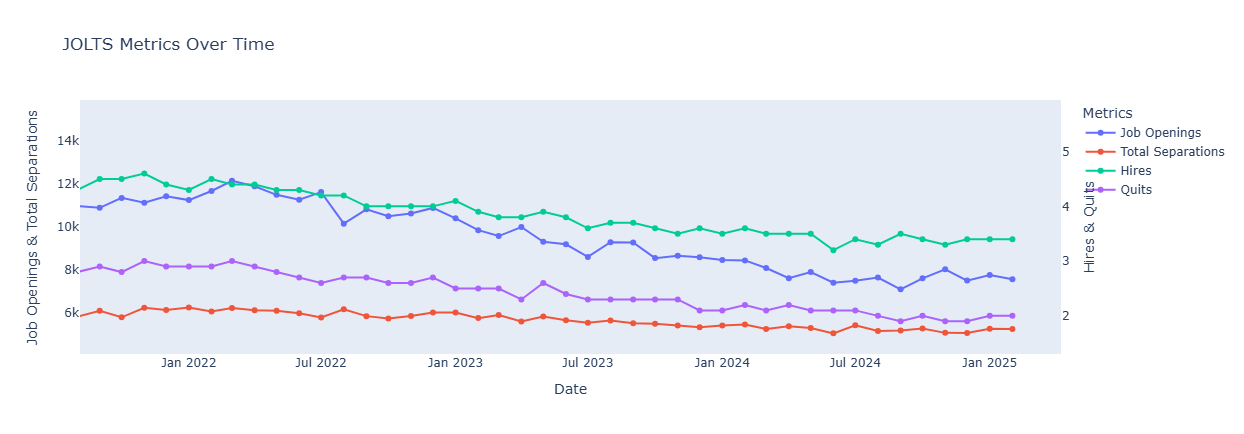
US-JOLTS
- Job Openings (JOL)
Job openings represent the number of available positions for which employers are actively recruiting, excluding internal transfers or promotions. This metric reflects the overall demand for labor and can indicate how easy or difficult it is for businesses to find qualified workers. A high number of job openings often signals a tight labor market or a mismatch between the skills employers need and the skills available in the workforce.
- Hires (HIR)
The hires metric measures the total number of additions to the payroll during a given month. This includes newly hired workers, rehires, and internal transfers from other locations. It reflects actual employment activity and provides insight into how many people are successfully entering the workforce. Rising hires suggest that businesses are confident and expanding, while a slowdown might indicate hesitation or economic uncertainty.
- Total Separations (TSL)
Total separations include all employees who left their jobs during the month, regardless of the reason. This encompasses voluntary quits, layoffs and discharges, and other separations such as retirements. This metric helps assess the overall rate of labor turnover. A high level of separations might point to instability, whereas lower levels suggest a more stable employment environment.
- Quits (QUR)
Quits are voluntary resignations initiated by the employee. This metric is widely viewed as a measure of worker confidence—when workers are willing to leave their jobs, it often means they feel optimistic about finding better opportunities elsewhere. A rising quit rate can signal a healthy and competitive labor market, while a drop may reflect concerns about job prospects.
- Layoffs and Discharges (LAY)
This metric captures involuntary separations initiated by the employer, including layoffs due to economic reasons and discharges for cause. It provides insight into business downsizing, restructuring, or economic distress. A sharp increase in layoffs and discharges can be an early warning sign of economic trouble or a shift in business conditions.
Related
Discover more from bigwaves.club
Subscribe to get the latest posts sent to your email.
